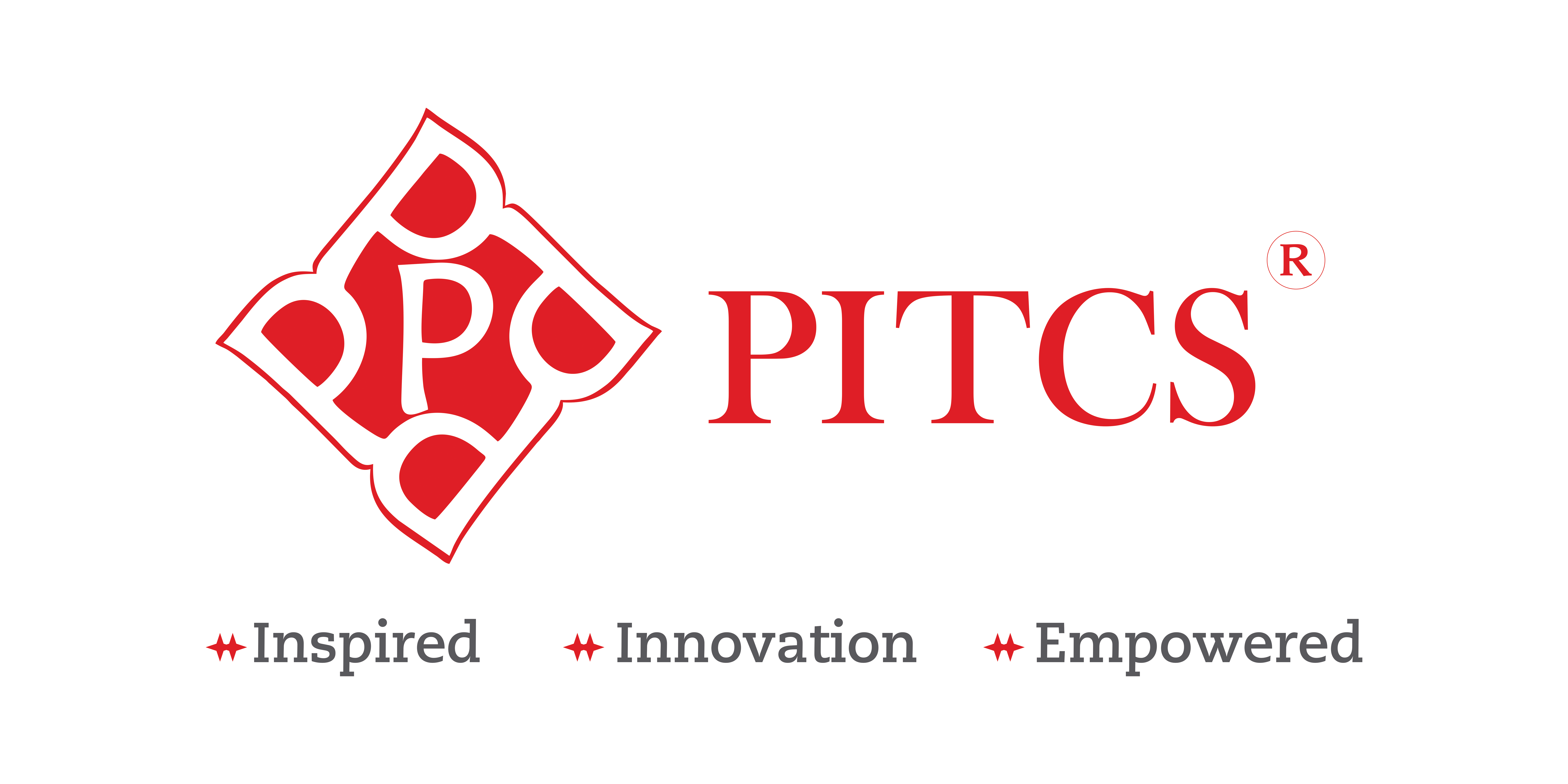Welcome to our blog, where we’ll delve into the dynamic world of human resource management and the critical role it plays in unlocking a business’s potential.
By the way, what is the importance of Human Resource Management?
From hiring and training top talent to fostering a positive workplace culture, human resource management is the backbone of any successful organization. Join us as we explore the significance of HRM and discover how it can propel businesses to new heights.
Table of Contents
Finding the Right Talent
Identifying the specific skills and attributes needed for each role is absolutely essential for finding the right talent for your organization. By pinpointing these key factors, you can ensure that your recruitment efforts are targeted and effective.
Utilizing diverse recruitment channels, such as job boards, social media, and professional networks, can expand your reach and connect you with a wider pool of potential candidates. These varied platforms can help you tap into talent that you might not have encountered otherwise.
Additionally, conducting thorough interviews and assessments is a pivotal step in the hiring process. These methods provide deeper insights into a candidate’s qualifications and their overall fit within your organization’s culture.
Lastly, offering competitive compensation packages and opportunities for growth can significantly enhance your ability to attract top talent. It’s crucial to showcase the value and potential for advancement that your organization can provide to potential candidates.

Recruitment Strategies
To unlock your business’s potential through effective human resource management, implementing employee referral programs can be a game-changer. Leveraging existing connections and bringing in high-quality candidates through trusted recommendations not only expedite the hiring process but also enhance the overall quality of your talent pool.
Developing employer branding initiatives that showcase your company culture and values can significantly amplify the appeal of your organization to potential applicants. This can also play a pivotal role in attracting candidates who resonate with your company’s ethos and mission, contributing to a stronger and more aligned workforce.
Moreover, collaborating with educational institutions and industry-specific organizations can create valuable pipelines for recruiting fresh talent with relevant skills, fostering a continuous influx of potential candidates.
Embracing technology-driven recruitment tools, such as applicant tracking systems and AI-powered screening processes, can further streamline the hiring process, enabling you to efficiently identify and onboard top talent while optimizing resources and time.
Talent Acquisition Techniques
Building strong relationships with passive candidates through networking events and industry conferences is a strategic approach that can yield successful talent acquisition in the long run. By engaging with potential candidates in a more relaxed and informal setting, you can create enduring connections that may eventually translate into valuable hires for your organization.
Utilizing data analytics to forecast future talent needs and trends empowers proactive talent acquisition planning, laying a robust foundation for sustained business growth. This analytical approach allows you to anticipate the evolving requirements of your workforce and stay ahead of recruitment needs.
You can implement flexible work arrangements and remote work options that can expand the appeal of your organization to a wider pool of potential candidates, fostering a more inclusive talent acquisition strategy. Embracing professional development opportunities as a core component of your talent acquisition strategy also serves as a powerful magnet for ambitious individuals seeking continuous skill enhancement, reinforcing your company as a hub for growth and learning.

Fostering a Positive Work Environment
Encouraging open communication and feedback among team members is crucial for creating a supportive and collaborative atmosphere within the organization. Recognizing and celebrating the achievements and milestones of employees not only boosts morale but also fosters a motivated and engaged workforce.
Flexible work arrangements demonstrate a commitment to promoting work-life balance and prioritizing employee well-being. Providing opportunities for professional development and growth empowers employees in their careers, signaling a dedication to nurturing their potential and contributing to their overall job satisfaction.
Employee Engagement Initiatives
Creating a positive work environment involves organizing team-building activities and events to foster camaraderie and collaboration among employees. Establishing reward and recognition programs is also crucial to appreciate and incentivize outstanding performance, motivating employees to strive for excellence.
Conducting regular surveys and feedback sessions helps to understand employee needs and concerns, fostering an environment of open communication and continuous improvement. Promoting a culture of inclusivity and diversity is equally essential to ensure all employees feel valued and respected, contributing to a more harmonious and supportive workplace.
Creating a Supportive Culture
Offering mentorship programs within the organization is a powerful strategy for providing employees with the guidance and support they need to advance in their careers. By facilitating access to counseling services and mental health resources, you demonstrate a commitment to prioritizing the emotional well-being of your team members.
Promoting work-life balance through initiatives such as flexible schedules and remote work options, where feasible, can significantly contribute to a more positive and harmonious work environment.
Establish explicit policies against discrimination, harassment, and any form of unfair treatment underscores the importance of creating a workplace that is inclusive, respectful, and supportive for all employees.

Developing Skills and Capabilities
Investing in employee training and development is a strategic investment in cultivating a more skilled and proficient workforce. By offering continuous learning opportunities, employees can enhance their abilities to adapt to the evolving needs of the business, thereby contributing to a more agile and versatile workforce.
Developing leadership skills among employees is instrumental in driving the overall growth and success of the organization, fostering a culture of innovation and proactive problem-solving. Encouraging a culture of skill development within the company not only empowers employees but also cultivates a dynamic environment that thrives on creativity and adaptability, positioning the organization for sustained success.
Training and Development Programs
Implementing tailored training programs allows organizations to specifically target and address skill gaps, enhancing the overall competency of the workforce. Providing access to online courses and workshops offers a flexible and convenient approach to employee development, empowering individuals to pursue learning opportunities at their own pace.
Mentorship programs play a pivotal role in nurturing talent and knowledge transfer within the company, fostering a supportive environment for professional growth.
Regular performance evaluations are instrumental in identifying areas for targeted training and development initiatives, enabling a strategic and tailored approach to enhancing employee skills and capabilities.
Succession Planning and Career Pathing
Establishing clear career paths for employees is a powerful motivational tool that can significantly reduce turnover rates by providing long-term goals to work toward. Additionally, succession planning plays a pivotal role in ensuring a seamless transition during leadership changes, ultimately maintaining business continuity.
Identifying high-potential employees early on allows for strategic talent development and succession preparation, laying the groundwork for sustained organizational success. Offering mentorship opportunities for career advancement not only supports the professional growth of employees but also contributes to enhanced retention within the company.
These initiatives collectively foster a supportive environment that empowers employees to thrive and contribute to the long-term prosperity of the organization.

Managing Performance Effectively
Setting clear performance goals is imperative in steering employees toward success and ensuring their efforts are in harmony with organizational objectives. Regularly reviewing employee performance enables timely recognition of accomplishments and the identification of areas requiring improvement.
Providing constructive feedback in a supportive manner is crucial for nurturing a positive work environment and promoting ongoing professional development. Furthermore, recognizing and rewarding exceptional performance serves as a powerful motivator for employees, encouraging them to consistently deliver their best work and contributing to a culture of excellence.
Performance Appraisal Methods
Implementing a variety of performance evaluation methods is crucial for gaining a comprehensive understanding of an employee’s strengths and areas for development. 360-degree feedback assessments offer a holistic view by gathering input from various perspectives within the organization, including peers, managers, and subordinates.
Behaviorally anchored rating scales (BARS) provide a structured approach to evaluating performance, focusing on specific behavioral examples to ensure accuracy and consistency in assessments.
Management by Objectives (MBO) empowers employees to actively participate in setting their performance targets, promoting a sense of ownership and accountability. Additionally, the critical incident technique plays a pivotal role in identifying specific behaviors that contribute to exceptional or subpar performance, offering clarity for appraisal purposes and guiding targeted developmental efforts.
Feedback and Improvement Processes
Unlocking the full potential of a business involves establishing open channels for two-way feedback, empowering employees to share their thoughts and ideas freely. Regular coaching sessions offer personalized guidance and skill development tailored to individual employee needs, fostering a culture of continuous improvement.
Implementing peer-to-peer feedback mechanisms further encourages collaboration, knowledge sharing, and mutual support among team members, ultimately enhancing the overall productivity and cohesion of the workforce.
Leveraging technology-enabled feedback platforms streamlines the feedback process, making it easier for both managers and employees to engage in constructive discussions, thus promoting a culture of open communication and growth within the organization.

Ensuring Legal Compliance
Implementing comprehensive HR policies and procedures is essential for ensuring legal compliance within the organization. Regular audits and reviews of existing policies play a crucial role in identifying any gaps or areas of improvement to meet legal requirements.
Providing regular training to HR staff and employees on labor laws and regulations is imperative to maintain legal compliance. Establishing clear communication channels between HR, management, and employees ensures that everyone is aware of their rights and responsibilities under the law, fostering a culture of transparency and accountability.
This proactive approach not only mitigates legal risks but also cultivates an environment of trust and adherence to regulatory standards.
HR Policies and Procedures
Developing an employee handbook that clearly outlines company policies, procedures, and code of conduct is vital for maintaining a harmonious work environment. This comprehensive resource serves as a guide for employees, ensuring they are aware of the organization’s expectations and standards.
Regularly updating HR policies in line with changing laws and regulations ensures legal compliance while protecting the interests of both the employees and the organization. This proactive approach demonstrates a commitment to upholding ethical standards and legal requirements.
Having a well-defined disciplinary process outlined in HR policies helps in addressing any misconduct or policy violations consistently and fairly, promoting a transparent and accountable work culture. Implementing a robust data privacy policy within HR procedures is crucial to safeguard employee information as per legal requirements, emphasizing the organization’s commitment to data protection and confidentiality.
Employee Relations and Labor Law
When it comes to building positive employee relations, fostering open communication and promptly addressing any grievances can significantly contribute to a healthy work environment while also ensuring compliance with labor laws.
It’s essential to stay informed about labor laws governing working hours, wages, benefits, and workplace safety to maintain fair employment practices.
Conducting regular reviews of employment contracts can provide protection for both the organization and its employees, helping to avoid potential legal disputes. Seeking legal counsel for complex labor law matters can also ensure that business decisions align with statutory requirements, ultimately unlocking the full potential of the business.

Workplace Culture
Fostering a positive and inclusive environment within the workplace is crucial for cultivating a sense of belonging and unity among employees. By encouraging open communication and embracing diversity, organizations can harness the power of varied perspectives to drive increased creativity and innovation.
Moreover, recognizing and celebrating individual differences plays a pivotal role in building a culture of respect and mutual understanding. Empowering employees to contribute their unique perspectives further fosters a collaborative and supportive work environment, ultimately unlocking the full potential of the organization.
Fostering a positive and inclusive environment
Establishing clear anti-discrimination policies is paramount in communicating the organization’s unwavering commitment to fostering diversity and inclusion within the workplace.
Provide regular diversity training to equip employees with the essential knowledge and skills to actively promote and maintain an inclusive work environment. Creating affinity groups or employee resource groups offers invaluable support and networking opportunities for underrepresented employees, further strengthening the sense of belonging and community.
The implementation of mentorship programs plays a pivotal role in promoting equal opportunities for career growth and development, ensuring that all employees have access to the guidance and support they need to thrive in their professional endeavors.
Promoting work-life balance and well-being
Embracing the significance of work-life balance, offering flexible work schedules or remote work options can empower employees to harmonize their personal and professional lives effectively.
Moreover, organizing wellness programs or activities creates an environment where employees can prioritize their physical and mental health, fostering a culture of holistic well-being within the organization. Access to counseling services and mental health resources underscores the commitment to supporting employees in managing stress and maintaining their overall well-being. Promoting unplugged time by discouraging after-hours emails or calls is vital in cultivating a healthier work-life balance for everyone, nurturing a positive and sustainable workplace culture.
FAQs: Importance of Human Resource Management
What is the role of human resource management in unlocking business potential?
Human resource management is instrumental in recognizing and nurturing talent within an organization, playing a pivotal role in creating a positive work environment conducive to productivity and innovation. By fostering effective communication among employees, HRM cultivates an atmosphere of teamwork and collaboration, ultimately enhancing the organization’s overall synergy. Moreover, through strategic planning and placement, HRM strategically aligns individuals with the right positions, thereby propelling business growth and success.
What are some key strategies for maximizing the potential of a company’s workforce?
· Investing in continuous learning and development opportunities is crucial for enhancing employee skills and knowledge, ultimately contributing to their professional growth.
· Promoting a culture of open communication and feedback fosters engagement and collaboration among employees, creating a positive and inclusive work environment.
· Implementing flexible work arrangements supports work-life balance and increases overall productivity, showcasing the organization’s commitment to employee well-being.
· Recognizing and rewarding employees for their achievements is essential in boosting morale and motivation, reinforcing a culture of appreciation and value within the workplace.
These initiatives collectively unlock the full potential of the organization by nurturing a dedicated and empowered workforce.
Why is it important for businesses to invest in employee development and training?
Investing in employee development and training is a strategic move that pays off in multiple ways. Not only does it lead to a more skilled and knowledgeable workforce, but it also directly impacts the quality of products and services. Employee development initiatives create a ripple effect by fostering a positive work culture, significantly boosting morale and motivation within the organization.
When businesses prioritize training, they stand to benefit from reduced employee turnover and the retention of top talent, ultimately resulting in long-term cost savings. Additionally, continuous learning and skill enhancement through training programs empower employees to adapt to new technologies and industry trends, ensuring that the business remains competitive in an ever-evolving market.
How can human resource management help in creating a positive work culture and environment?
Human resource management serves as the catalyst for open communication and transparency within the organization, laying the foundation for a harmonious and collaborative work environment. Recognizing and appreciating employees is integral to HRM, uplifting morale and instilling a sense of value within the workforce.
Through the implementation of fair policies and practices, HR management cultivates trust and fairness, fundamental for fostering a cohesive and supportive culture. Additionally, HRM plays a pivotal role in creating pathways for professional development and growth, ultimately contributing to a positive and progressive work environment.
How does effective human resource management contribute to organizational success?
Unlocking business potential through effective human resource management is crucial for cultivating a positive work culture and boosting employee morale, ultimately leading to higher productivity and retention rates.
Aligning HR strategies with business goals enables organizations to ensure that their workforce is equipped to drive success and growth. Additionally, strategic talent acquisition and development empower companies to build a skilled and adaptable workforce, amplifying their competitive edge. Furthermore, implementing a well-structured performance management system fosters continuous improvement, ultimately contributing to the overall success of the organization.
Final Words: What is The Importance of Human Resource Management?
Unlocking the full potential of a business hinges on the strategic management of human resources across various facets. From recruiting top talent and nurturing a positive work environment to developing skills and managing performance effectively, the significance of Human Resource Management cannot be understated.
By fostering a culture of respect, inclusivity, and well-being, organizations can tap into the collective potential of their workforce, driving innovation and sustainable growth. Moreover, prioritizing legal compliance, employee relations, and work-life balance further cements the foundation for a thriving and successful business. Together, these elements collectively contribute to unlocking the business potential through effective Human Resource Management initiatives.




